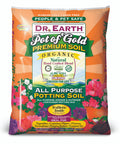Details
Edible Qualities
Sweet Lifeberry® Goji Berry is a large shrub that is typically grown for its edible qualities, although it does have ornamental merits as well. It produces red round berries which are usually ready for picking from late summer to mid fall. The berries have a sweet taste.
The berries are most often used in the following ways:
- Fresh Eating
- Cooking
- Preserves
Features
Sweet Lifeberry® Goji Berry is draped in stunning deep purple flowers along the branches from late spring to early summer. It has green foliage throughout the season. The narrow leaves do not develop any appreciable fall color. It features an abundance of magnificent red berries from late summer to mid fall. The fruit can be messy if allowed to drop on the lawn or walkways, and may require occasional clean-up.
This is a dense multi-stemmed deciduous shrub with an upright spreading habit of growth. Its relatively fine texture sets it apart from other landscape plants with less refined foliage. This plant will require occasional maintenance and upkeep, and is best pruned in late winter once the threat of extreme cold has passed. It has no significant negative characteristics.
Aside from its primary use as an edible, Sweet Lifeberry®: Goji Berry is sutiable for the following landscape applications:
- Accent
- Hedges/Screening
- General Garden Use
- Container Planting
Care
Planting & Growing
Sweet Lifeberry® Goji Berry will grow to be about 12 feet tall at maturity, with a spread of 7 feet. It has a low canopy, and is suitable for planting under power lines. It grows at a medium rate, and under ideal conditions can be expected to live for 40 years or more.
This shrub is quite ornamental as well as edible, and is as much at home in a landscape or flower garden as it is in a designated edibles garden. It does best in full sun to partial shade. It does best in average to evenly moist conditions, but will not tolerate standing water. It is not particular as to soil type or pH. It is highly tolerant of urban pollution and will even thrive in inner city environments. This is a selected variety of a species not originally from North America.
Sweet Lifeberry® Goji Berry is a good choice for the edible garden, but it is also well-suited for use in outdoor pots and containers. Its large size and upright habit of growth lend it for use as a solitary accent, or in a composition surrounded by smaller plants around the base and those that spill over the edges. It is even sizeable enough that it can be grown alone in a suitable container. Note that when grown in a container, it may not perform exactly as indicated on the tag - this is to be expected. Also note that when growing plants in outdoor containers and baskets, they may require more frequent waterings than they would in the yard or garden.
































